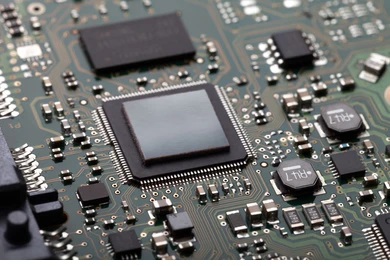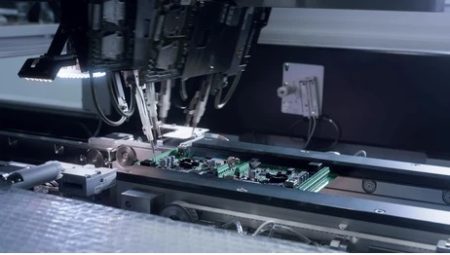- +86-755-23012705
- Building 3, Jinfeng Industrial Park, Fuyong Street, Baoan District, Shenzhen ,China
- [email protected]
Menu
Surface Mount Device (SMD) packages are an essential part of modern electronics. These components are designed to be mounted directly onto the surface of a printed circuit board (PCB), as opposed to traditional through-hole components that require holes to be drilled in the board. SMD packages come in various types, each suited for specific applications and offering distinct advantages. In this blog, we will explore the most common types of SMD packages and their characteristics.
The SOT package is one of the smallest and most widely used SMD packages, particularly for transistors and diodes. The SOT-23 package, for example, is commonly used for single-transistor or diode components. It typically features a three-pin configuration, making it suitable for low-power, low-frequency applications. The compact size of the SOT package is a key reason for its popularity in space-constrained devices like mobile phones and other portable electronics.
Small Size: Takes up minimal space on the PCB, ideal for compact devices.
High Reliability: Fewer chances of connection issues as compared to through-hole components.

The SOIC package is widely used for integrated circuits (ICs) and is one of the most common forms of SMD packaging. SOIC packages typically have a flat, rectangular shape with two rows of leads on the longer sides. SOIC packages come in various sizes, ranging from 8 to 28 pins, making them versatile for a wide range of applications.
Compact and Easy to Handle: Smaller than traditional dual in-line packages (DIP), making them ideal for automated assembly.
Good Performance: Suitable for both analog and digital ICs, including operational amplifiers, logic chips, and voltage regulators.
The QFN package is a leadless, square-shaped SMD package, commonly used for high-performance chips. Instead of traditional leads, the QFN has pads underneath the package for soldering. These packages can have anywhere from 16 to 100 or more pads, and they are known for their excellent electrical performance and thermal management.
No Leads: This eliminates the risk of lead damage during transport or soldering, improving reliability.
Excellent Thermal Performance: The large exposed copper pad on the bottom of the QFN package allows for better heat dissipation, making it ideal for high-power devices such as processors and power management ICs.
The BGA package is a sophisticated type of SMD package that uses solder balls arranged in a grid pattern at the bottom of the package for connection to the PCB. This package is often used for complex ICs, including microprocessors, graphic chips, and memory chips. BGA packages provide a high density of interconnections and are suitable for high-speed, high-performance applications.
High Pin Count: Allows for a large number of connections, making it ideal for high-performance processors and multi-functional ICs.
Enhanced Heat Dissipation: The bottom-mounted solder balls improve heat dissipation, which is crucial for high-power components.
Improved Signal Integrity: The reduced length of the interconnections results in better signal integrity, especially for high-frequency applications.
The LQFP package is another widely used SMD package, particularly for microcontrollers and digital ICs. The LQFP has leads that extend from all four sides of the package, which are usually arranged in rows. This package is typically used when a larger number of connections (more than 100 pins) are needed in a compact form factor.
Low Profile Design: The thinner profile of LQFPs helps in reducing overall device height, allowing for more compact designs.
Higher Pin Count: Can support hundreds of pins, ideal for large ICs and complex circuit designs.

The TSSOP is a variation of the SOIC package, but with a thinner profile and smaller footprint. It is commonly used for small, high-density ICs where space is at a premium. The TSSOP package typically has 8 to 20 pins and is often found in signal processing ICs, memory chips, and other compact integrated circuits.
Slim Profile: Perfect for low-profile, space-constrained designs.
Fine Pitch: The smaller lead pitch allows for a higher density of pins in a small package.
The MLF package is similar to the QFN in that it has no leads and features pads on the underside for soldering. It is often used for small and high-frequency devices, such as power management ICs and communication chips. The MLF package typically comes in a square or rectangular shape.
Leadless Design: Reduces mechanical stress and improves reliability.
Enhanced Electrical Performance: Suitable for high-speed, high-frequency applications due to reduced inductance.

The world of SMD packages is diverse, and each package type has its unique characteristics tailored for specific applications. Whether it is the small and compact SOT for transistors, the high-performance BGA for processors, or the space-saving TSSOP for memory chips, SMD packages provide significant advantages in modern electronic design. As technology advances, the demand for miniaturization, higher performance, and more efficient heat management continues to drive the evolution of SMD packaging. Understanding these common types of SMD packages helps engineers select the right components for their designs, ensuring reliability and optimal performance in their electronic devices.
Take Your Projects to New Heights with XPCB Limited
XPCB Limited offers top-notch PCB manufacturing, quick-turnaround prototyping, and turnkey PCBA services designed to make your projects shine. Count on us to bring your ideas to life with efficiency and quality. Your success matters to us, and we’re here to make your innovation journey smooth and rewarding.






XPCB Limited is a premium PCB & PCBA manufacturer based in China.
We specialize in multilayer flexible circuits, rigid-flex PCB, HDI PCB, and Rogers PCB.
Quick-turn PCB prototyping is our specialty. Demanding project is our advantage.
Tel : +86-136-3163-3671
Fax : +86-755-2301 2705
Email : [email protected]
© 2024 - XPCB Limited All Right Reserve
